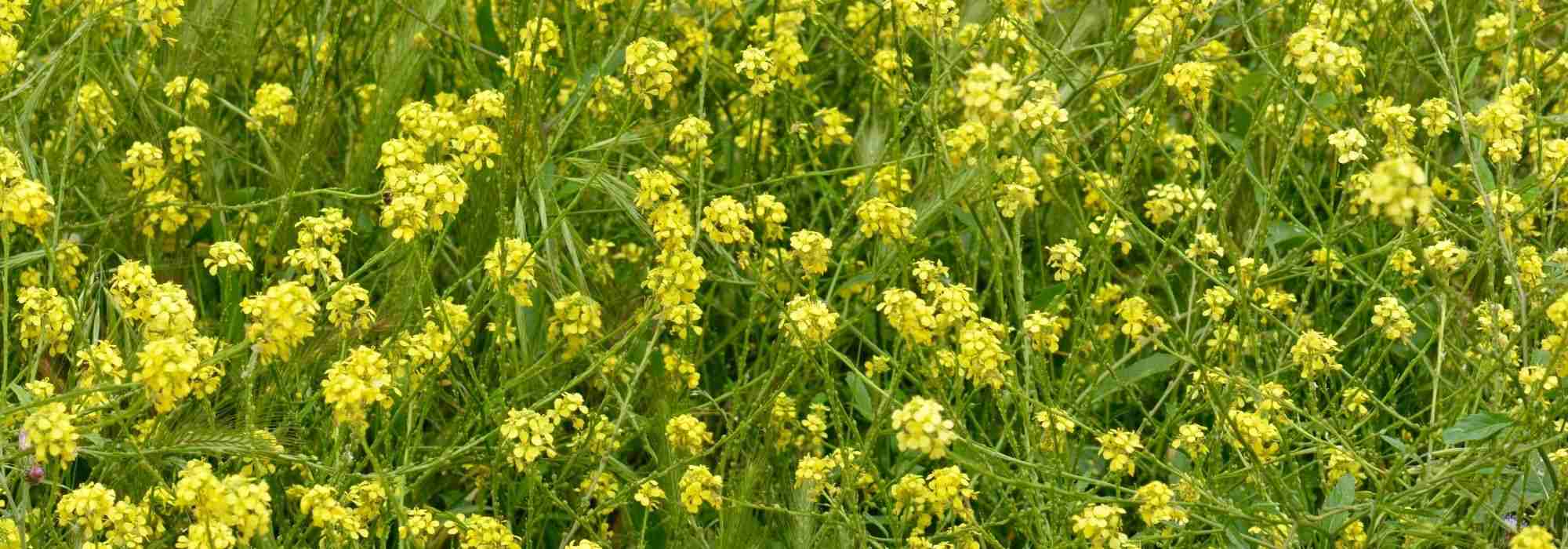
White mustard: sowing, growing
Contents
White mustard in a nutshell
- White mustard is an effective annual forage and groundcover plant
- This herbaceous plant has ramified and villous stems, with lobed and dentate leaves and yellow flowers in clusters
- Perfect for improving soil quality, it is grown as a green manure, an important source of organic matter
- White mustard also benefits from a strong ability to absorb nitrates and combat nematodes
- As a condiment plant, it is used for the preparation of fine mustards
- Easy to grow, it requires little maintenance and is cultivated in open ground in soil kept moist
A word from our expert
Cultivated in France since the 14th century, white mustard, Sinapis alba, is an annual herbaceous plant that produces large pale yellow seeds used in the making of strong mustard. While their taste is bitter, it is less pungent than that of black or brown mustard.
Grown as a green manure, Sinapis alba transforms into organic matter once destroyed by frost or by crushing, which naturally enriches the soil.
White mustard covers the ground with its dense clumps, and leaves no room for weeds that it smothers. Its root system also allows water and air to penetrate the soil well, and effectively retains nitrates. This helps prevent pollution of groundwater.
The roots of mustard have properties similar to garlic. They are thus a very effective and natural bactericide and nematicide. The plant therefore allows for the disinfection and sanitisation of the soil for a future vegetable garden.
Mustard in general includes species from the genus Sinapis, as is the case with white mustard, and species from the genus Brassica. The Sinapis alba (white mustard) is the most suitable as a condiment, although Brassica nigra (black mustard) is also used for this purpose. Prepared mustard is generally made using a mixture of white mustard seeds and black mustard seeds, which are mixed with vinegar, must, or verjuice.

Mixture of white mustard seeds and black mustard seeds.
With a melliferous flowering, white mustard is also effective in repelling aphids in the garden. It is grown in open ground in sunny or semi-shaded conditions.
Easy to grow, Sinapis alba requires very little maintenance, limited to light watering to keep the soil moist.
Here are all our tips on this perfect green manure to improve the quality of your soils.
Description and botany
Botanical data
- Latin name Sinapis alba
- Family Brassicaceae
- Common name white mustard, Sanve, Senf
- Flowering June to October
- Height 70 to 120 cm
- Exposure Sun
- Soil type cool, rich and light
- Hardiness Zone 5, Zone 6a, Zone 7b, Zone 8a
White mustard, sanve or senf, is an annual herbaceous, forage and condiment plant, often grown as green manure.
It belongs to the Brassicaceae family (formerly known as crucifers), which includes cabbages, turnips, radishes, and more. White mustard is native to North Africa, Europe, and the Near East.
There are about forty species of mustard, with around a dozen found in Europe.
- The three main species of the genus Sinapis are Sinapis alba (white mustard), Sinapis arvensis (field mustard), and Sinapis pubescens (hairy mustard).
- As for the varieties of mustard in the genus Brassica, notable examples include Brassica nigra (black mustard) and Brassica juncea (Chinese mustard).
Sinapis alba L. or white mustard, is a hardy annual that grows very quickly in all types of cool soil. Forming a compact groundcover, it has soft, branching, and hairy (villous) stems that average 70 cm in height. Its leaves are compound, lobed, and dentate.

Sinapis alba, Sinapis arvensis, Sinapis pubescens (©Fabio Lo Valvo), Brassica nigra, Brassica juncea.
The flowering, which occurs between June and October, produces mustard flowers with cruciate shapes featuring four small yellow petals that have a sweet, honey-like fragrance, arranged in spreading terminal spikes. The fruits of Sinapis alba are bumpy siliques covered in hairs containing 4 to 8 pale yellowish seeds, measuring 1 to 2 mm. Its oil-rich seeds contain vitamins A, C, B1, B2, and B6.
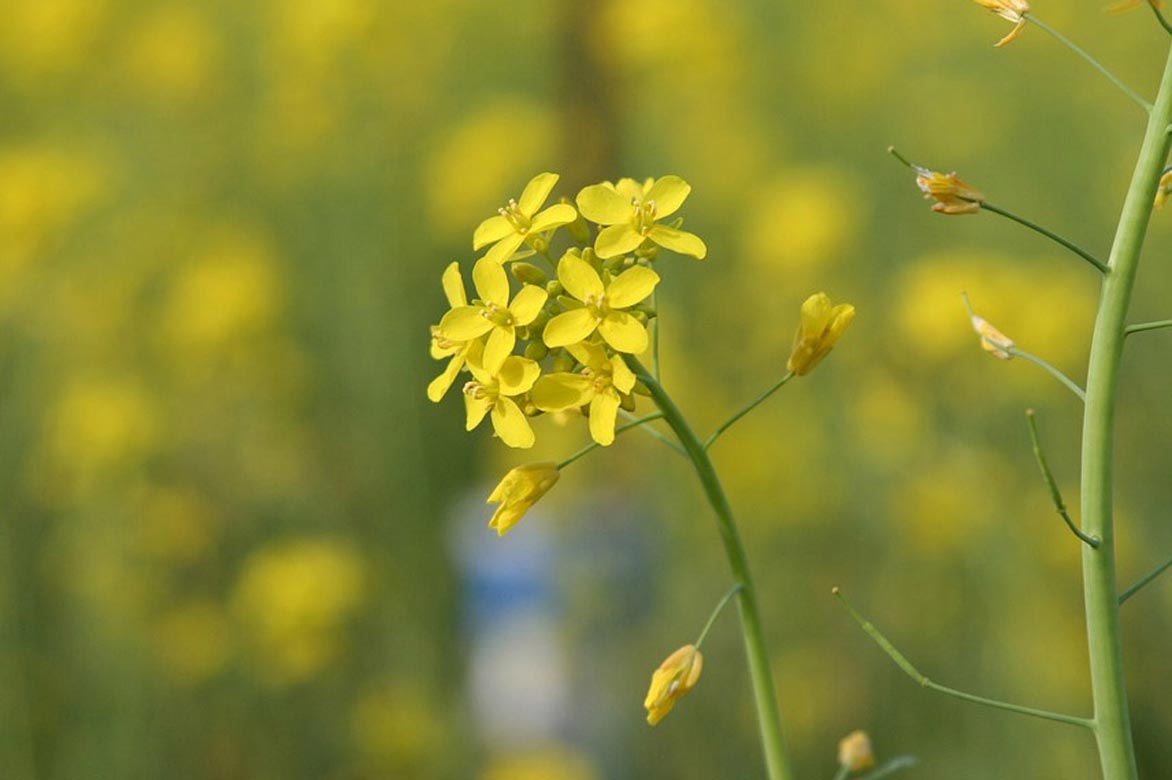 White mustard flower
White mustard flower
Read also
Green manures: why, how?Our mustard seeds
White mustard
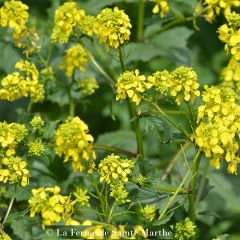
White Mustard - Organic Green Manure - Ferme de Sainte Marthe Seeds
- Flowering time July to October
- Height at maturity 50 cm
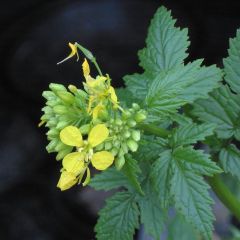
White Mustard - Green Manure - Box 10 m²
- Flowering time July to October
- Height at maturity 50 cm
Other Mustard Species
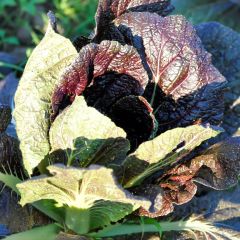
Mustard Red Giant - Ferme de Sainte Marthe Seeds
- Flowering time June to August
- Height at maturity 30 cm
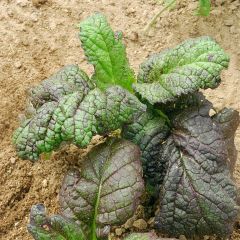
Organic Rode Amsoïm Red Mustard seeds - Ferme de Sainte Marthe seeds - Brassica juncea
- Height at maturity 60 cm
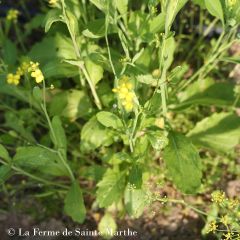
Organic Mike Giant Mustard seeds - Ferme de Sainte Marthe seeds
- Flowering time June to August
- Height at maturity 60 cm
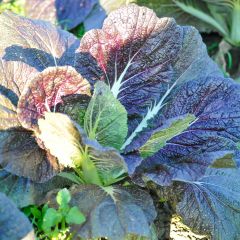
Sinapsis juncea Green Serifon
- Height at maturity 60 cm
Discover other Mustard seeds
View all →Available in 1 sizes
Available in 1 sizes
Available in 3 sizes
Available in 1 sizes
Available in 1 sizes
Available in 1 sizes
Available in 1 sizes
Growing and care of white mustard
Particularly tolerant, white mustard poses no cultivation difficulties and requires little maintenance and care. Completely hardy, Sinapis alba is nonetheless an annual plant. It germinates, develops, flowers, and eventually dies, producing seeds. Due to its hardiness, it can however germinate in autumn and overwinter as a seedling before flowering the following spring.
Where to grow it?
Low-maintenance, it is even described as opportunistic, as it tolerates all soil types (acidic, alkaline, heavy or light, rich to poor…) although it prefers rich, light, and cool soils. It does not tolerate however excess moisture, drought, or shade. White mustard grows best in sunny or partially shaded locations.
How to maintain it?
As long as it receives regular rainfall and good sunlight, Sinapis alba is a plant that manages perfectly well without any gardener intervention.
Whether grown around the vegetable garden or in the middle of the rows, the maintenance of white mustard is limited to occasional light watering to keep the soil fresh.
→ Learn more with Pascale in How to succeed in growing mustard?
Read also
Nourrir le sol naturellementWhen and how to sow white mustard?
Sowing white mustard is always done in open ground. It can take place in spring (from March to May) or at the end of summer (from August to September).
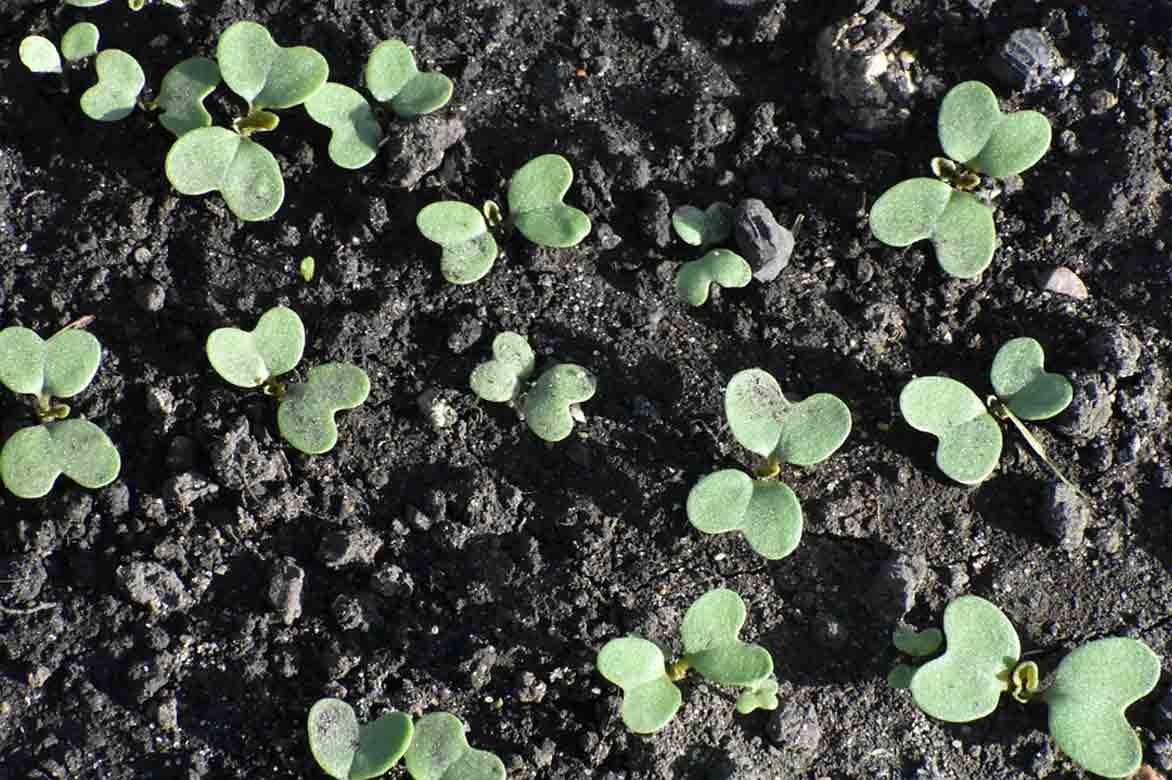 Sowing mustard.
Sowing mustard.
Sow mustard according to its use
If you wish to sow white mustard to harvest the seeds, choose a spring sowing.
On the other hand, if you want to limit the growth of weeds and benefit from an effective nitrate trap, prefer to sow it from mid-August.
If you are using it as a green manure, be aware that early seed bolting leads to lignification of the plant. As a result, it takes longer to decompose. Therefore, prefer a sowing between August and September for this purpose.
Sowing
- Rake and level the soil
- Moisten the soil to sow in cool soil
- Preferably choose a sunny location, light shade can also be suitable
- Sow by broadcasting at a rate of 2 g per m²
- Keep it moist, without excess moisture
Note: white mustard belongs to the same family as cabbages. Therefore, avoid planting it before growing these.
Harvest, grinding and use
Chopping to obtain a green manure
To use white mustard as green manure, it must be mowed, chopped, and buried. To prevent spontaneous sowing, chop the mustard at the end of flowering, before it goes to seed.
- Use a mower to chop the mustard.
- Leave it simply in place, as mulch for soil inhabitants (including earthworms) to bury.
- You can also incorporate it by shallow digging.
Harvesting seeds
Using mustard as a condiment requires harvesting its seeds. Harvest when the siliquae are dry, which occurs about two months after spring sowing.
- Cut the stems before the pods turn brown
- Dry them upside down
- Once thoroughly dry, beat the stems over a container to release the seeds
For proper storage, seeds should be dried in a dry, light-protected space.
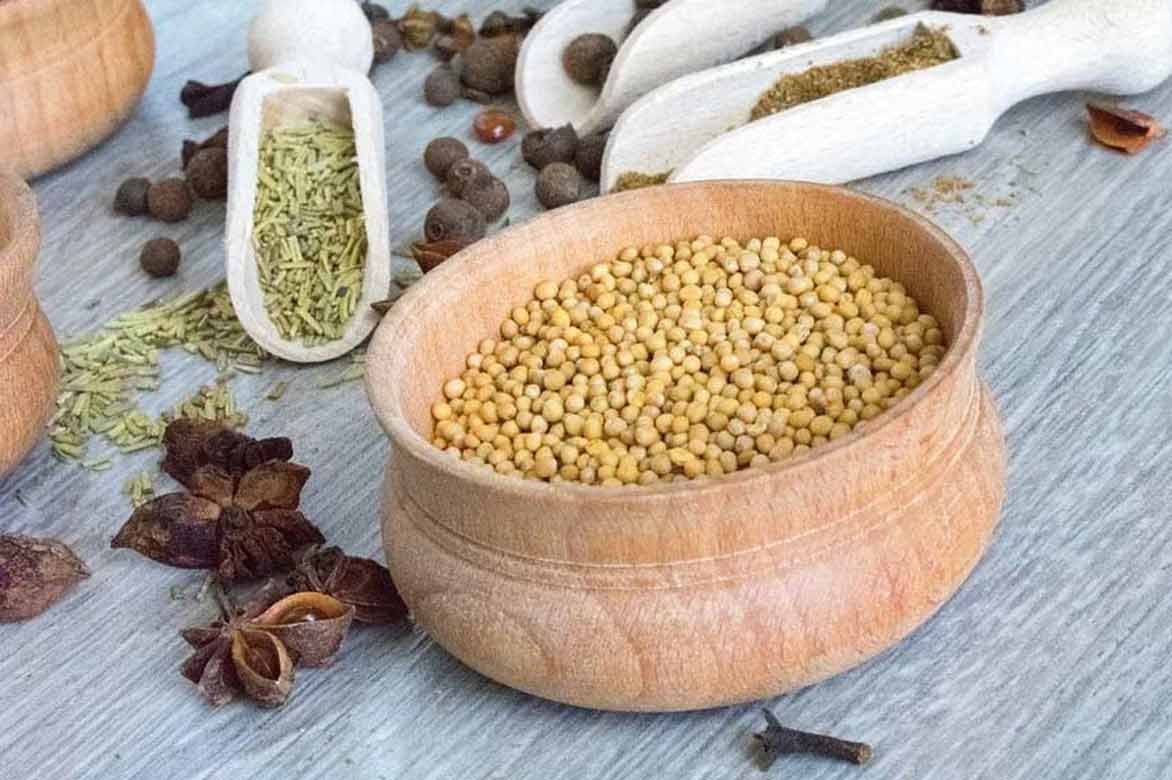
White mustard seeds.
Uses
In the garden
Once established, the root environment of mustard confers bactericidal properties to the soil. Its insecticidal effect acts particularly against nematodes, these parasitic worms that attack crops. Sown in the vegetable garden at the end of summer, Sinapis alba helps to naturally disinfect and purify the soil before undertaking vegetable crops. White mustard also benefits from a good ability to absorb nitrates. Grown in autumn and winter, it prevents nitrate from infiltrating deep into the soil and thus polluting groundwater.
The root system of mustard penetrates the soil and allows it to be loosened by allowing air and water to enter. Consider growing mustard in the location of your previous bean or pea crops, which tend to compact the soil.
However, white mustard is primarily used as green manure for the vegetable garden during winter. Very popular in permaculture, this 100% natural manure has numerous benefits in the garden, as it allows:
-
- to enrich the soil with nutrients,
- to largely limit the establishment of adventives (weeds),
- to act as a plant cover protecting sandy soils from leaching, and preventing silty soils from being battered by rain,
- to promote the rhizosphere (the root environment of crops).
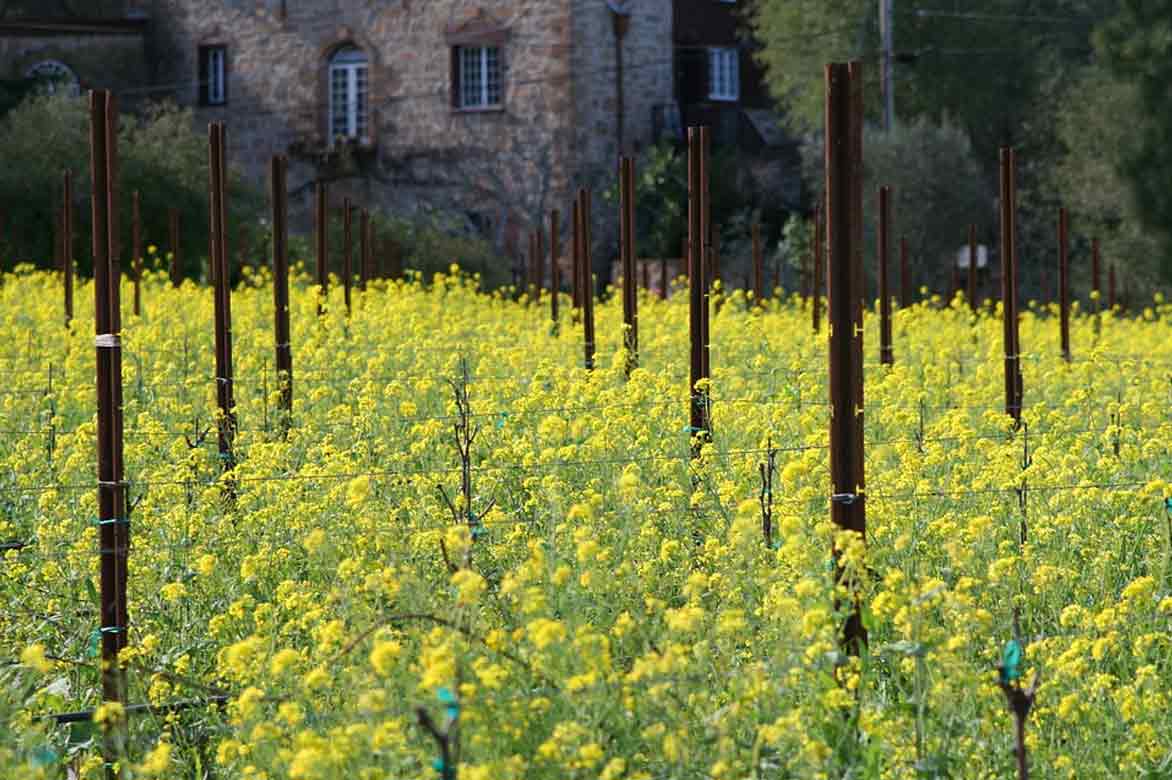
White mustard in a vineyard.
In the kitchen
The young green and tender shoots of white mustard are very tasty and can be used to enhance the flavour of a salad, sandwich, or even a pizza.
However, it is mainly its condiment seeds that are used in cooking, as they are part of the essential mustard sauce. Their mustardy flavour emerges about 15 minutes after being ground, then mixed with water and vinegar. The seeds can also be consumed raw or roasted to enhance various dishes. After three to four days, the seeds begin to sprout, which does not hinder their consumption.
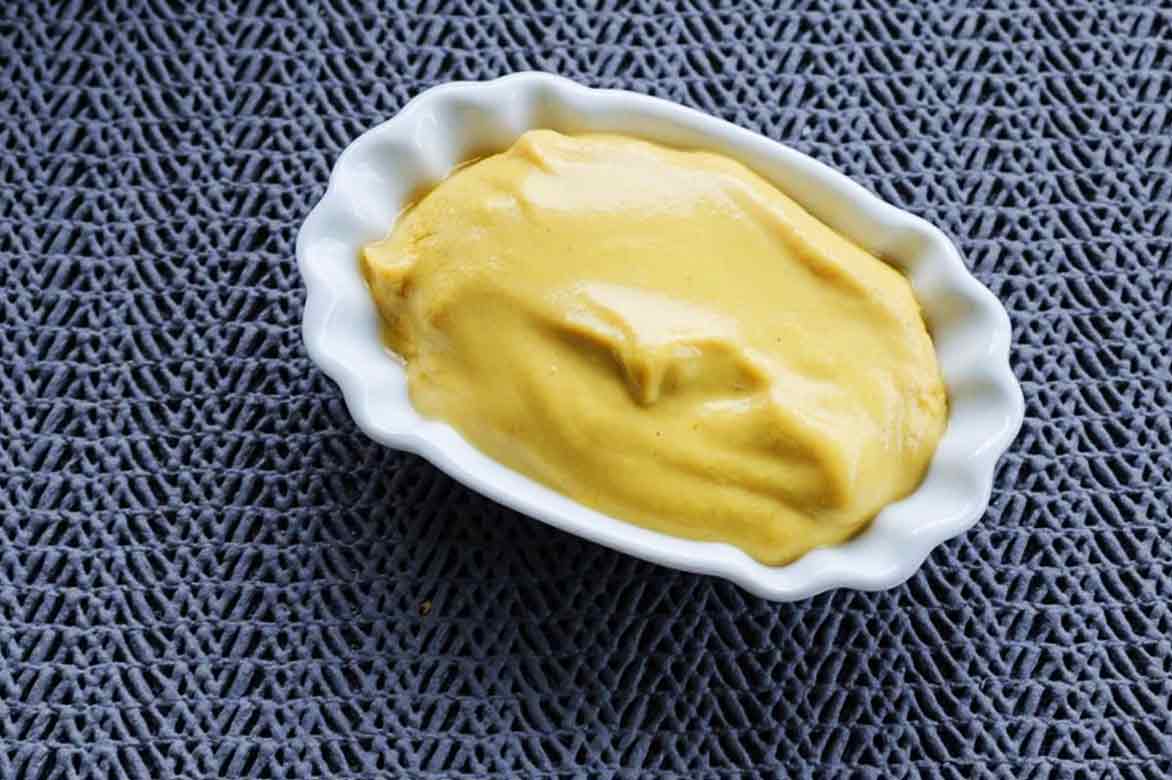
Mustard sauce.
Note: white mustard is sometimes confused with Chinese mustard, the latter being consumed in mesclun.
Medicinal properties
Mustard is rich in vitamins (A, B2, B6, E, C, K), as well as minerals (Selenium, Iron, Manganese, Calcium, Magnesium, Copper). Its leaves are antiscorbutic, particularly due to their high vitamin C content. In China, mustard leaves are used as a spring tonic and depurative. The plant helps combat digestive disorders, flu-like symptoms, and respiratory conditions. It relieves back pain and joint pain caused by rheumatism. However, caution is advised, as the use of mustard in the form of a poultice is sometimes contraindicated, particularly in cases of venous disorders.
Mustard contains carotenoids with antioxidant properties that may help prevent the onset of certain cancers.
Diseases and potential pests
White mustard has a very good resistance to diseases.
However, it is highly appreciated by slugs, especially in the young shoot stage. It is sometimes used to divert these gastropods from the vegetable garden.
Be careful also of the cabbage fly and all pests of the Brassicaceae.
White mustard propagation
As we saw earlier, the propagation of white mustard occurs through sowing, in spring or autumn. You can sow the harvested seeds directly from the plant, or choose from our seeds.
Associations with white mustard
Grown near the vegetable garden, the plant benefits it with its insecticidal properties and attracts pollinators as well as beneficial creatures (ladybirds, earthworms, hedgehogs…). White mustard can therefore be associated withDwarf Bean, Green Artichoke from Provence, Bonica F1 Aubergine, and Burpee’s Golden Beetroot.
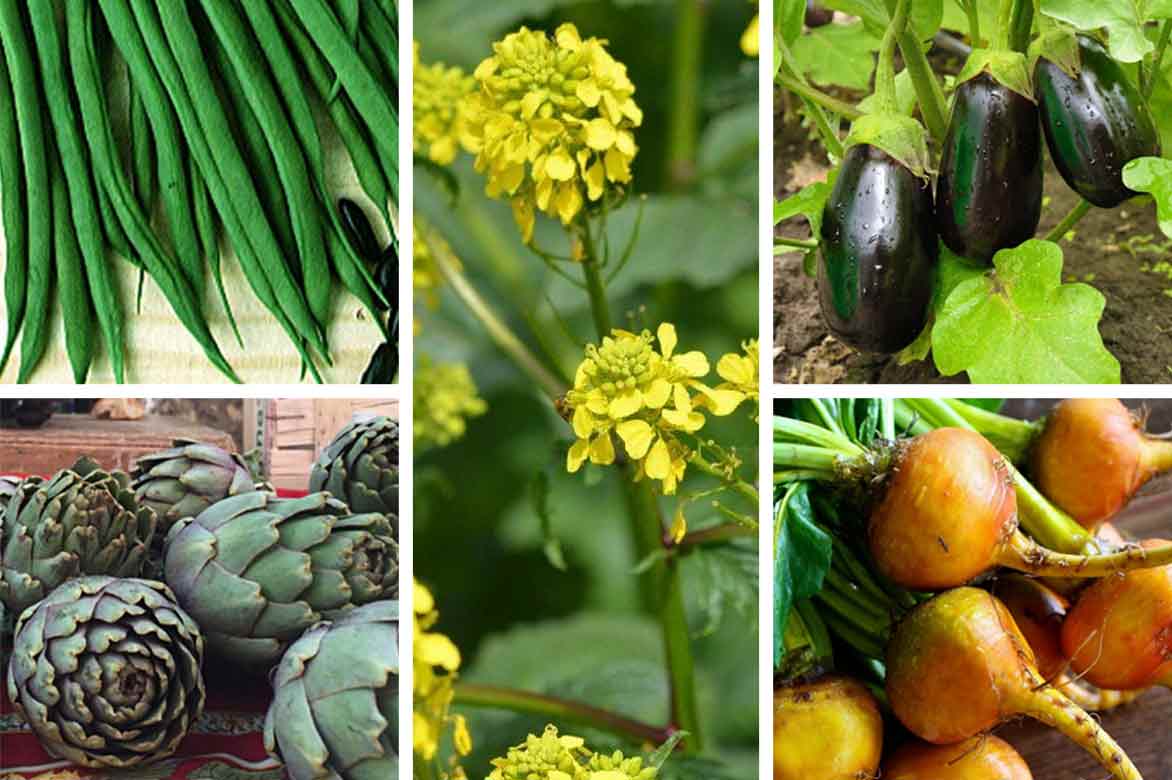
Useful resources
- Find all the information you’ve always wanted to know about green manures
- Follow our tips to learn about and use green manures
- Also learn how to nourish the soil naturally
- Finally, discover our various mustard seeds to sow
- Subscribe!
- Contents
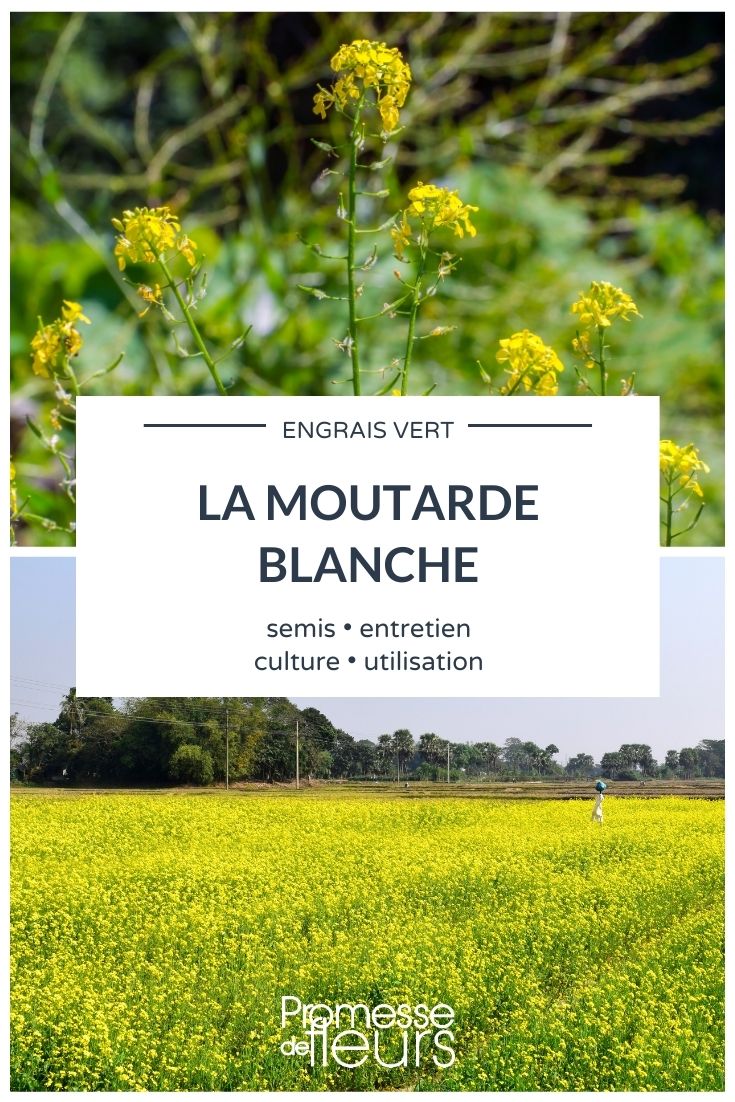

































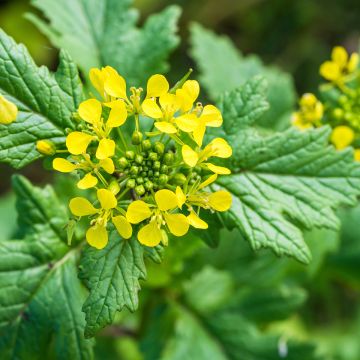

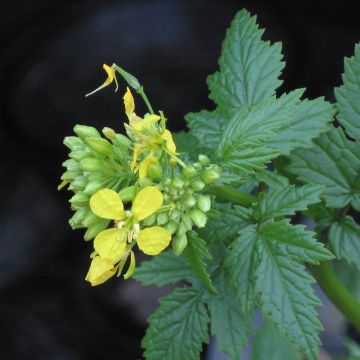


Comments